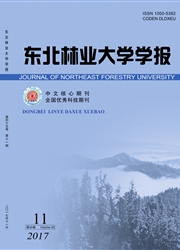

 中文摘要:
中文摘要:
由于受饲喂制度、圈养活动场面积及环境异质性等因素的影响,甘肃兴隆山麝场的圈养马麝有刻板行为发育。每次行为取样持续时间为5min,表达强度为(2.169±0.933)s(n=54)。食物形态(精料)及饲料的定时定量等导致圈养马麝的摄食动机受挫,直接引起嗜食异物和刻板舔刮等口部刻板行为的表达。圈养环境下的活动限制则直接导致马麝发育及展现狂奔、往返走、立台、跳墙和搭蹄凝视等运动性刻板行为型。刻板行为表达强度的比较分析表明,兴隆山圈养马麝的刻板行为表达持续时间在各月间存在差异,但不显著,繁殖季节的刻板行为表达强度显著高于非繁殖季节。
 英文摘要:
英文摘要:
The captive reared alpine musk deer in Xinglongshan National Natural Reserve developed and expressed abundant stereotyped behaviors, and the lasting duration was 2. 169 ± 0. 933 seconds in every five minutes ( sampling period), which was related with the farming system and the capture of musk deer farm. The limited feeding-time and the provision of concentrated foods resulted in the frustration of feeding motivation in musk deer, which released the oral stereotypic behaviors such as feeding on non-food materials and stereotypic licking. The enclosing limited individuals and caused deer to develop locomotor stereotypie behaviors, including galloping, to-from-walking, platform-standing, wall-jumping and stereo-typic gazing, and the stereotypie behaviors of the musk deer in smaller enclosures with simpler environment occurred more frequendy. No significant difference in duration of stereotypie behaviors was found between months, but musk deer expressed stereotypie behaviors more strongly during mating season than non-mating season.
 同期刊论文项目
同期刊论文项目
 同项目期刊论文
同项目期刊论文
 期刊信息
期刊信息
